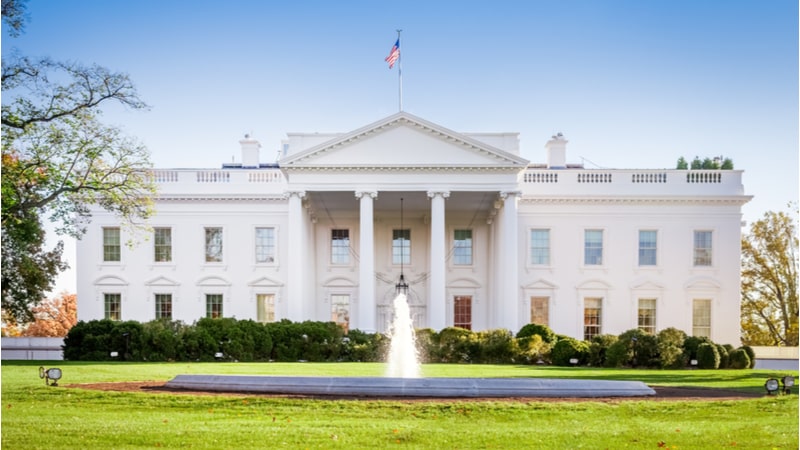
The Biden administration today released its National Spectrum Strategy, marking the beginning of a multi-year evaluation of how scarce radio frequency spectrum is being used in the United States by government and private sector users, and how it could be used better in the future to accommodate insatiable demands for more spectrum to accommodate wireless-delivered services of all kinds.
The strategy – billed by the White House as a “blueprint for American innovation, competition, and security in advanced wireless technologies” – dangles the possibility of both repurposing vast swaths of spectrum while also demanding increased sharing of spectrum among users.
The government’s allocations of spectrum are vital to major wireless service providers – think cell phone service providers – who in recent years have regularly paid billions of dollars for additional allocations of spectrum through auctions managed by the Federal Communications Commission (FCC).
But spectrum is also vital to any number of Federal government agencies that also rely heavily on using spectrum to carry out their missions. A 2022 Government Accountability Office (GAO) report, for instance, identifies some of the biggest Federal spectrum users including the Defense Department and the Federal Aviation Administration.
“The federal government uses spectrum for air traffic control, wildfire containment, weather observation, law enforcement, border security, national defense, and more,” GAO said in the 2022 report. “Spectrum needs have increased and are expected to continue to increase, due to, for example, commercial 5G telecommunications and other new technologies that require additional spectrum.”
The big problem, as GAO pointed out, is that it’s not possible to create more available spectrum, and “all of the usable spectrum has already been designated for use among federal and nonfederal users.”
Under the strategy released by the White House, government agencies along with private sector companies are being put on notice that Federal spectrum policy will be changing – especially on the spectrum sharing front.
The Biden administration said the strategy “will guide decisions about how to allocate limited spectrum resources and ensure these decisions are made through a rigorous, transparent process, which is more important today than ever, as new technologies create increasing demands for spectrum.”
“Innovations ranging from 5G networks, to precision agriculture, to unmanned aerial vehicles, to moon missions take large amounts of spectrum to operate. Meeting the demands of innovation requires America’s spectrum policy to adapt and improve,” the White House said.
The strategy released today was developed by the Commerce Department’s National Telecommunications Information Administration (NTIA) component – which has long served as the Federal government’s spectrum manager – with input from the FCC and the “many federal agencies relying on spectrum,” the White House said.
The strategy keys on four pillars:
- Adjusting existing spectrum allocations by studying over a two-year period the possible repurposing of 2,786 megahertz of spectrum, and creating “guiding principles for near-term” spectrum allocations by soliciting stakeholder input, and employing data-based analytics;
- Developing a coordinated, collaborative framework for long-term spectrum planning “which will help spectrum users make prudent, long-term investments,” use of “greater interagency coordination” among Federal agencies, and development of “values-based models – as well as best practices for technical and economic analyses – that quantify the benefits of different spectrum allocation options”;
- Increasing spectrum access through more spectrum sharing including an effort by the government to “advance research, create investment incentives, and set forth measurable goals to advance spectrum access technology” within the next 12-18 months; create more spectrum testbeds, and develop a “National Spectrum Research and Development Plan”; and
- Taking steps to expand the spectrum workforce through a National Spectrum Workforce Plan, and to create “broader public appreciation for spectrum’s vital role in our society.”
NTIA Director Alan Davidson said today during a press call that “spectrum underpins the GPS that lets us navigate anywhere on the planet, the instrumentation systems that help airplanes land safely, the critical communications of first responders, the satellite networks that underpin our military communications and many systems our military uses.”
“The challenge for us is ensuring that all these users can coexist, even as they continue to grow,” he said.
The NTIA director said that of the more than 2,700 megahertz of spectrum that could be repurposed, much of that was “critical” for 5G wireless communications and “will be even more essential for 6G” wireless systems.
“As the strategy is implemented, and the studies take place, the White House stands ready to ensure that the studies are effective and are based on the best available science and data,” he said.
“In addition to identifying more spectrum we also need to develop technology to use spectrum more efficiently,” he said, adding, “but government agencies such as the Department of Defense can still use” spectrum for “critical purposes such as national defense, while creating more opportunities for commercial users.”
